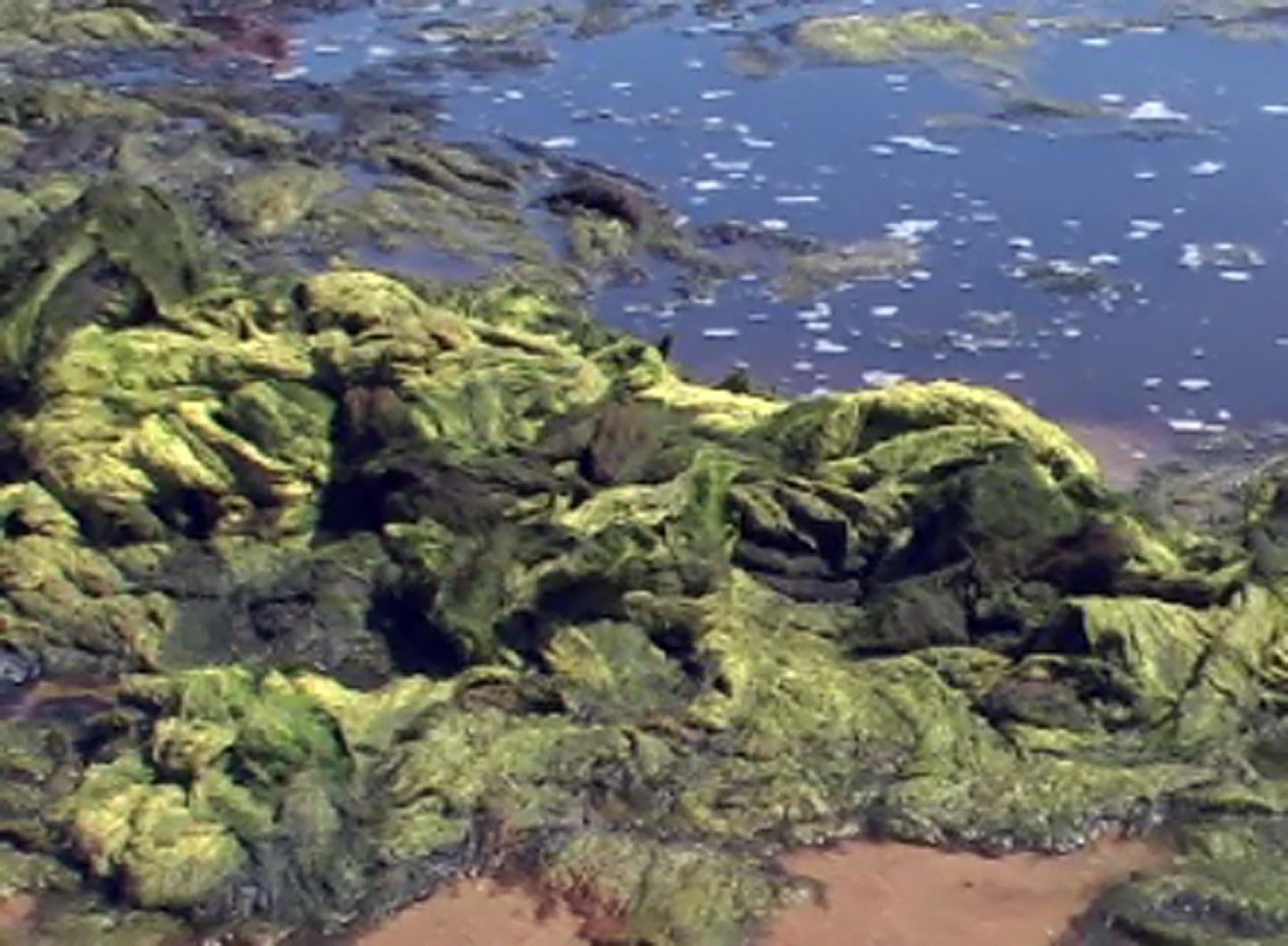Were it not for the smell, you might mistake the light, fibrous, grayish stuff in Bob Woodruff’s shed for the material they make egg cartons from.
But the low-tide aroma is the giveaway. What we have here is dried slime. Or, more correctly, dried algae of the species Enteromorpha clathrata, which this summer grew in unprecedented profusion over much of the Edgartown Great Pond.
Mr. Woodruff produced a jar of the stuff in its undried state, too. He dipped his fingers in, then let the slippery, violent-green mass ooze back into the jar and pronounced it remarkable and fascinating.
Not, perhaps, the words most people would choose to describe it. But that would be an aesthetic reaction, and Mr. Woodruff’s interest is entirely pragmatic.
“I’m just curious to know if it might have a commercial value. Because we’ve got tons of it,” he said.
That is no exaggeration. The algae, he reckons, affected maybe 90 per cent of the 800-acre pond. And using a boom and net of his own making, he and other workers for the Great Pond Foundation collected masses of it. Now, he’s trying to find any use for the stuff.
The reason for the great bloom of algae is presumed to be that the waters of the pond are overloaded with nitrogen, much of which leaches through the groundwater from septic systems.
Perhaps it could be used as mulch or fertilizer, if it has lots of that nitrogen locked up in its cells. To that end, Mr. Woodruff is planning to experiment with using it as a growing medium.
Or maybe it could make paper. Maybe some kind of fuel. He doesn’t know yet, he’s just throwing ideas out there.
Because something has to be done. The algae is choking the pond, posing a potential threat to eelgrass and oysters and probably other life forms. It has washed up in great drifts on the shore, decomposing into black goo on the pond bottom.
The first step, Mr. Woodruff and others figure, is to know as much as they can about the enemy.
At least now they are pretty sure what it is. On Friday, word came back from the Smithsonian Institution to the water resources planner for the Martha’s Vineyard Commission, William Wilcox, confirming the tentative identification of the type of weed.
It is Enteromorpha clathrata, a species which is known to exist from around Cape Cod to as far south as Chesapeake Bay, and occurring in brackish water.
“I would say it poses rather a serious threat,” said Mr. Wilcox.
“Not only can it smother other organisms as it grows, but I’m worried it could change the environment of the bottom in a way which would threaten oysters by making a more mucky, organic environment where it would be hard for them to set and grow.
“The bottom of the pond should be a gradation; stony around the points, which is where the oysters grow, and sandier in the bays. The thing to worry about is that those stony points might get covered with organic material.”
The question now is how to combat the weed.
Notwithstanding Mr. Woodruff’s hopeful experiments, Mr. Wilcox suggested the primary means of dealing with the problem is the one they have used for years — opening the Edgartown Great Pond, and others which also have nitrogen pollution problems, to the sea.
“This past summer there was a real effort,” he said.
There had been two attempts to open the pond to the flushing of the sea. The first lasted only a day before it closed naturally; the second lasted six days, which he said was not a bad result and would have exchanged maybe 80 per cent of the water volume of the pond with the sea.
The Great Pond Foundation tested a new dredge as part of the effort at increasing circulation, digging channels through the tidal flats to help with circulation. The foundation now is in the process of buying a dredge, which opens the possibility of harvesting the weed.
“But mechanical removal is expensive,” said Mr. Wilcox, “and is really only a short-term solution.”
In the longer term, the only sustainable solution is to drastically reduce the levels of nitrogen entering the pond in groundwater, he said.
Already Edgartown has plans to tie many of the houses around the pond into the town wastewater system, which will eventually see less leaching.
But even so, it could take many years for the groundwater already contaminated to make its way into the pond.
Meanwhile, it could help a lot if someone like Mr. Woodruff found a use for the algae.
Mr. Wilcox noted the species was similar to other types of weed people eat in Japan.





Comments
Comment policy »